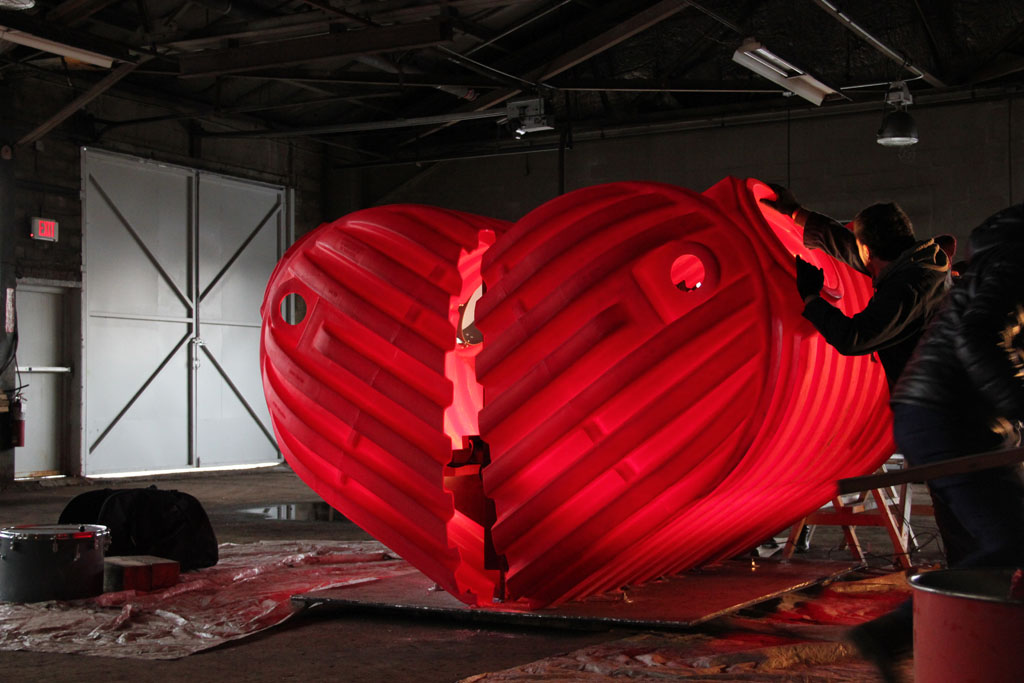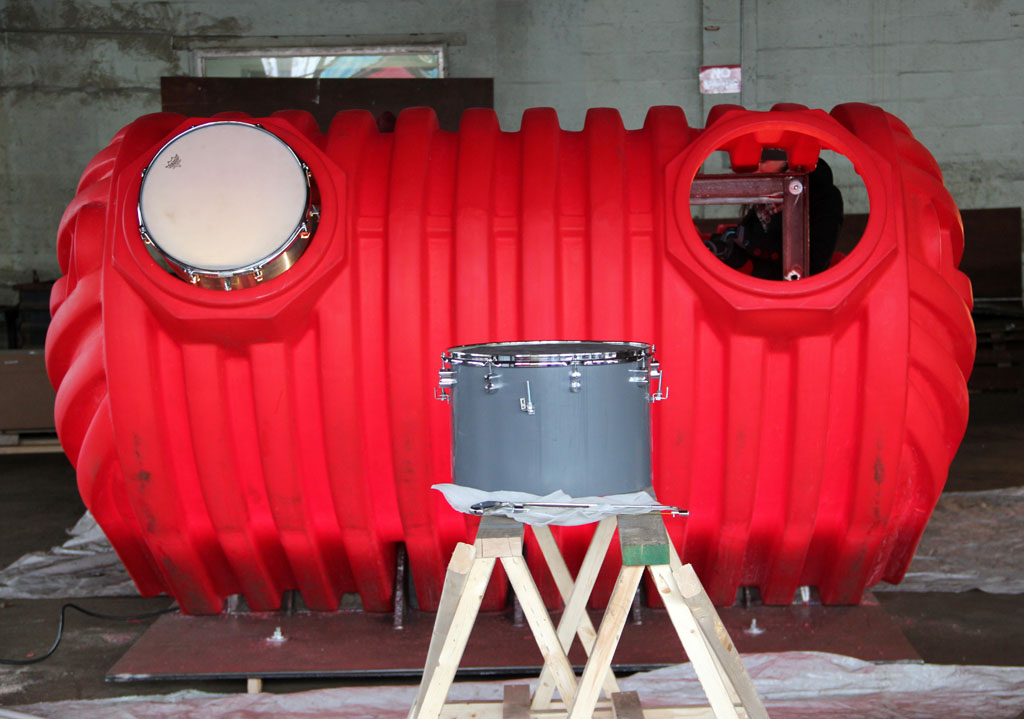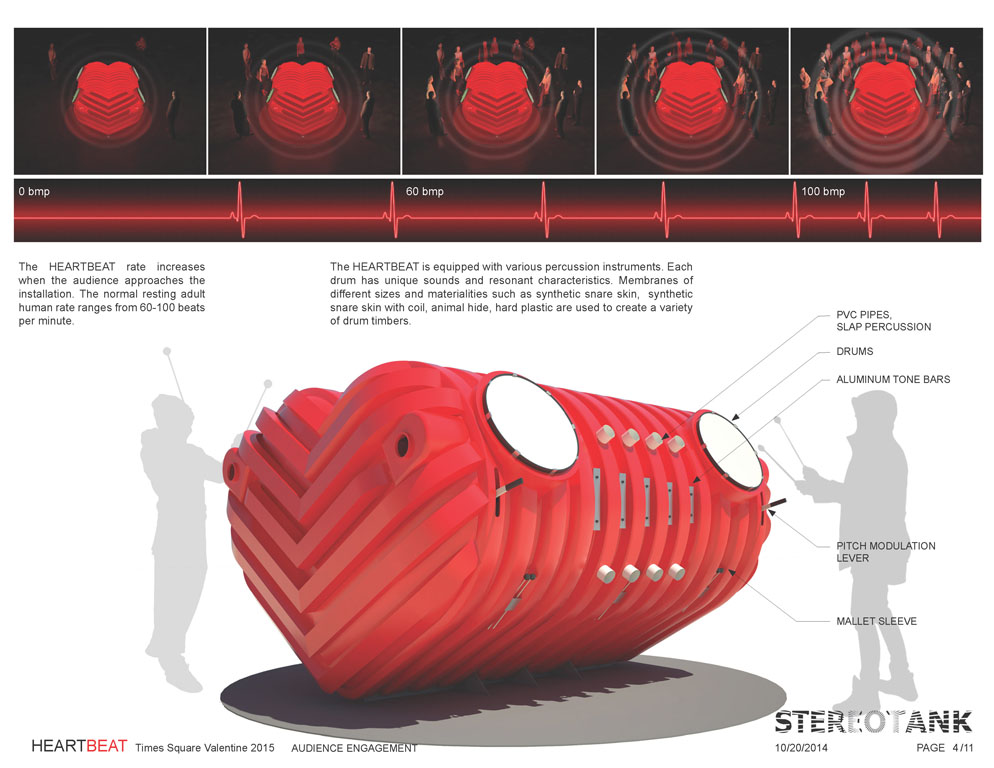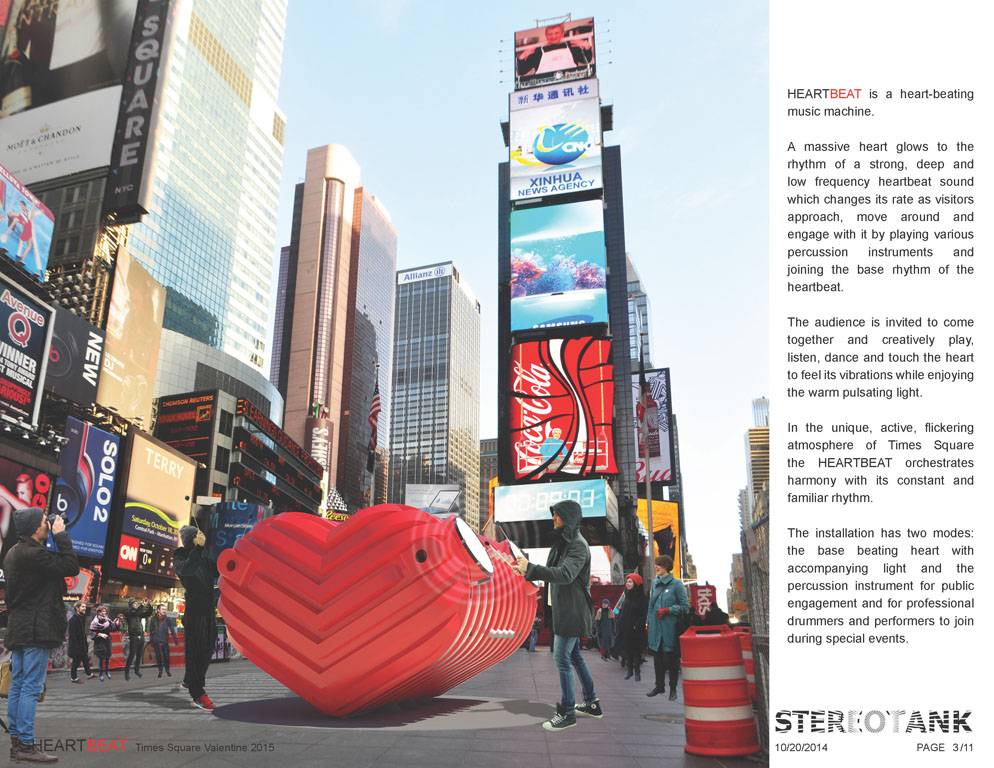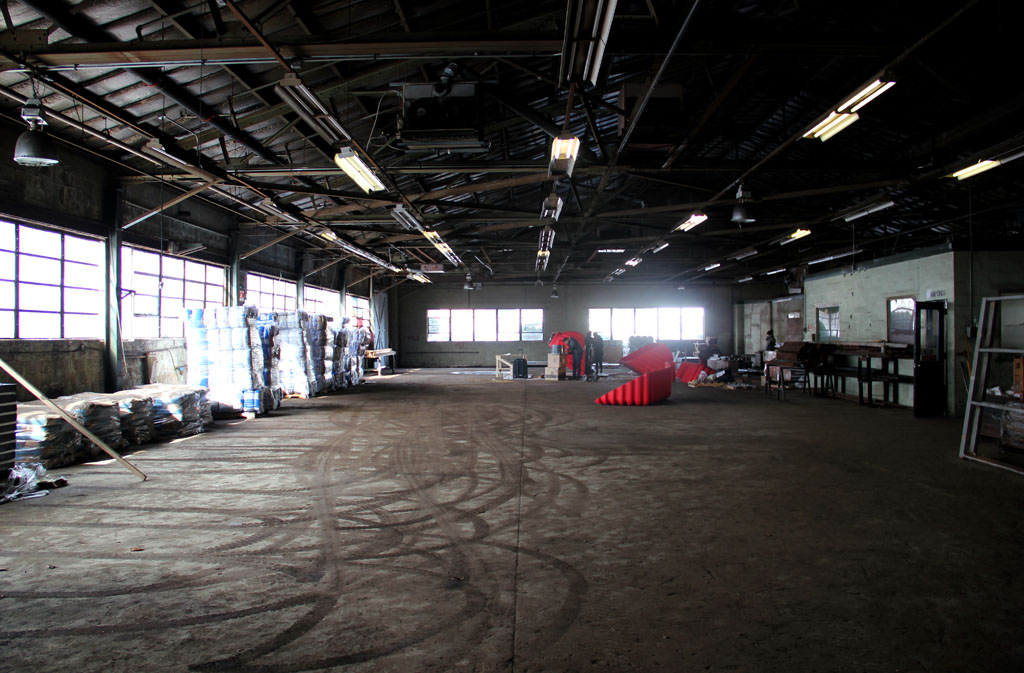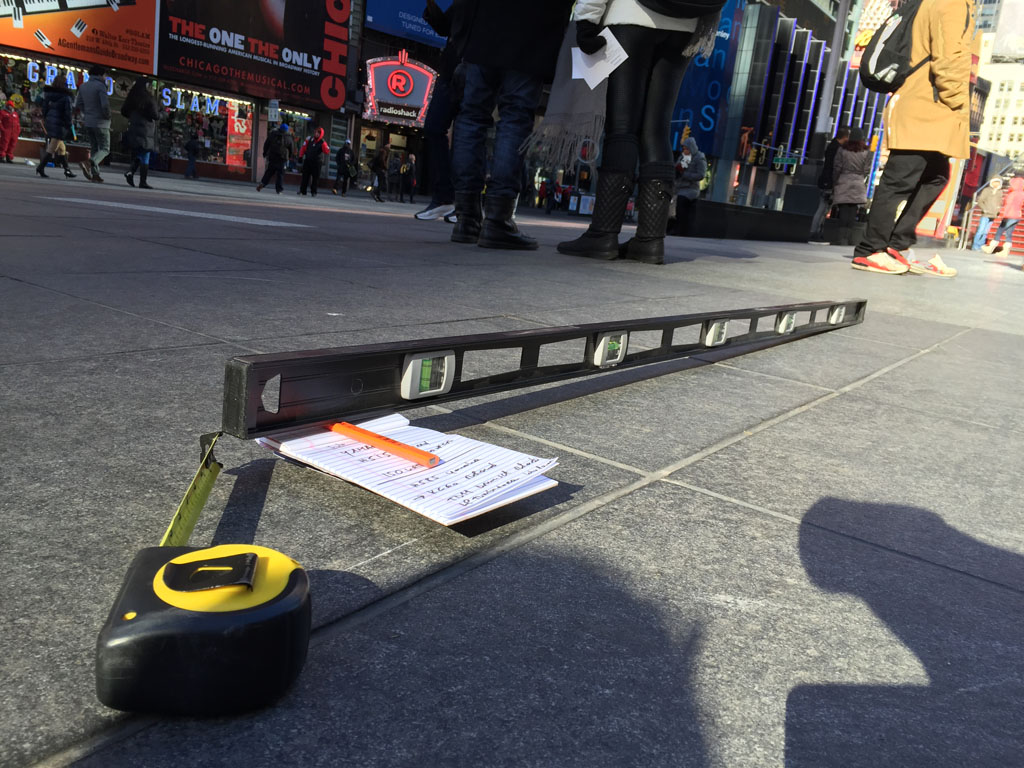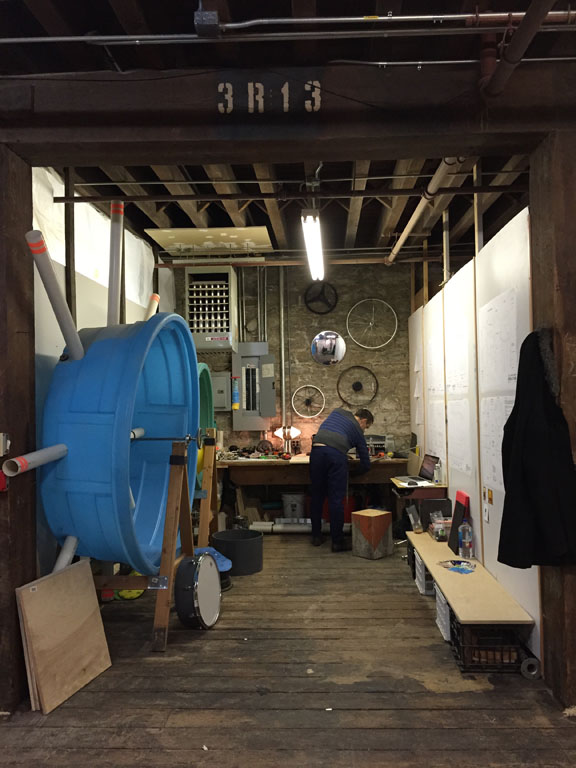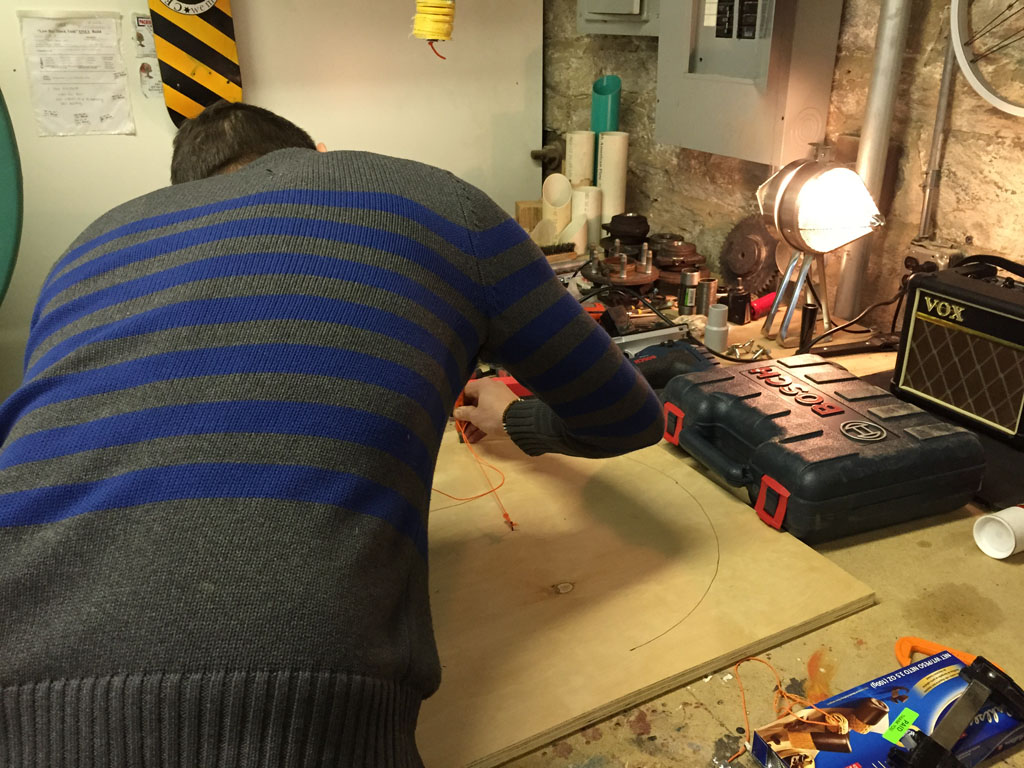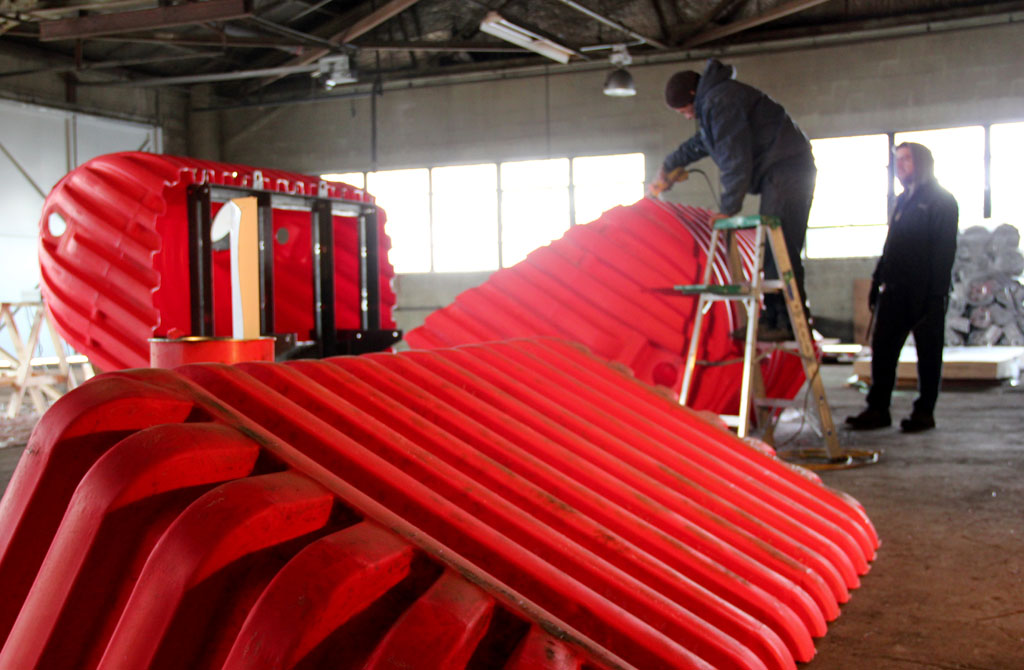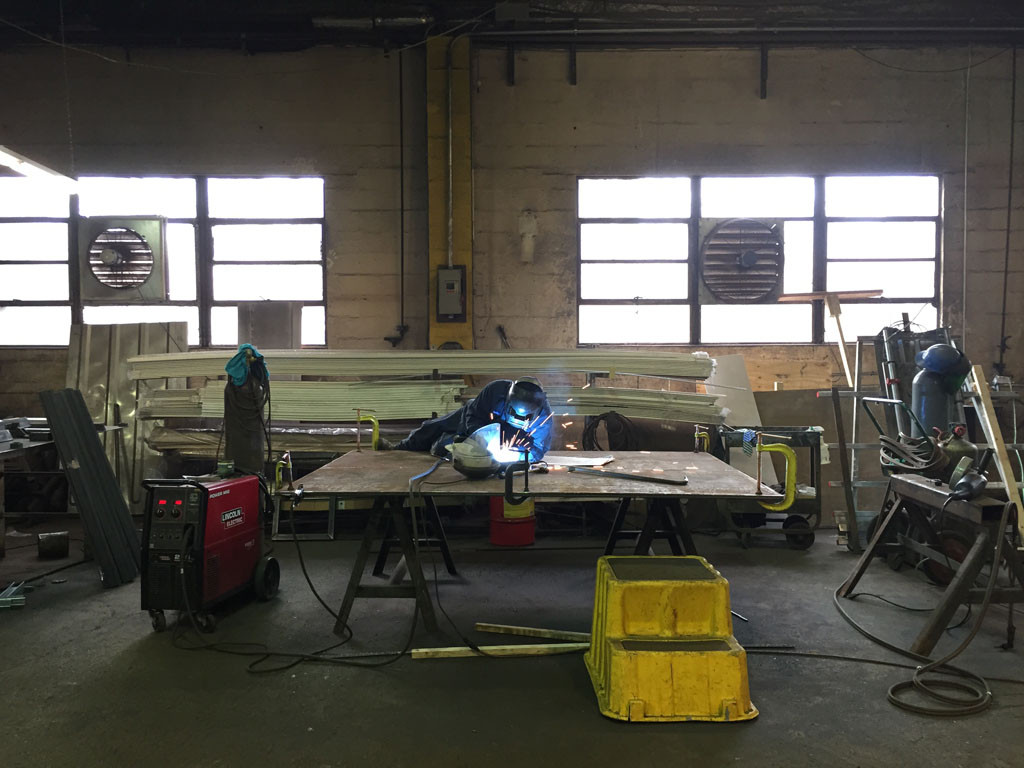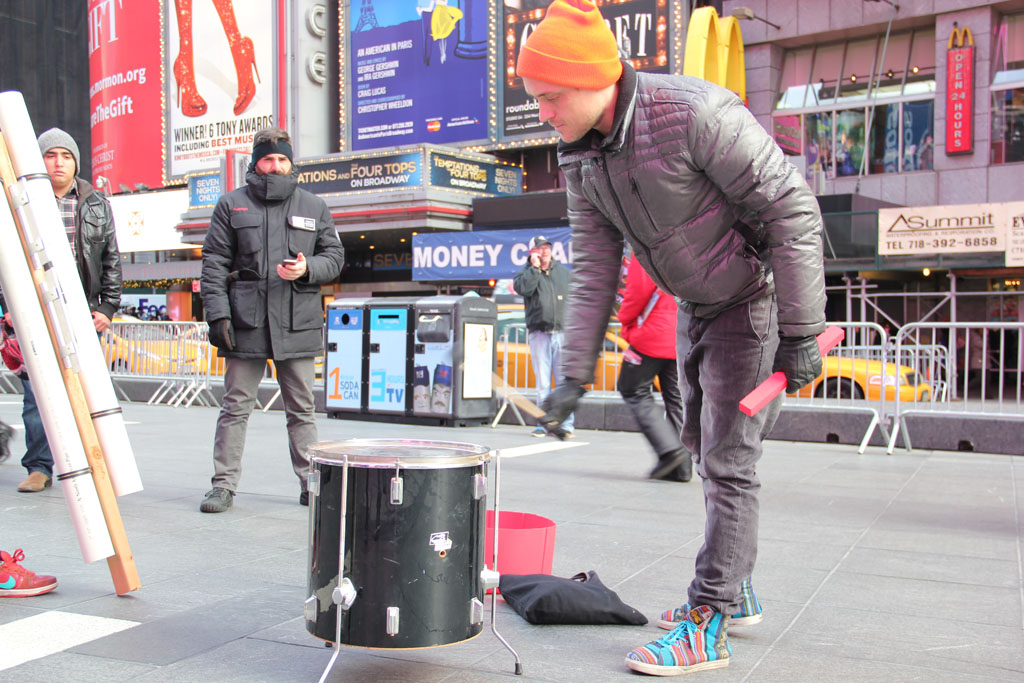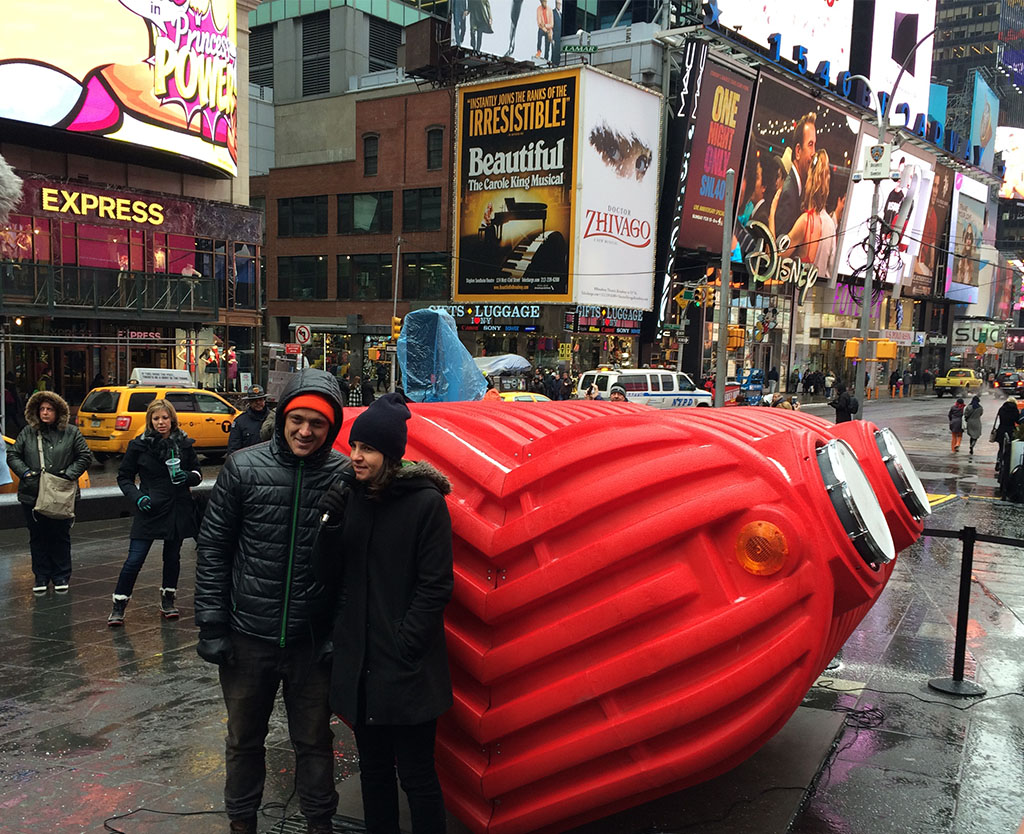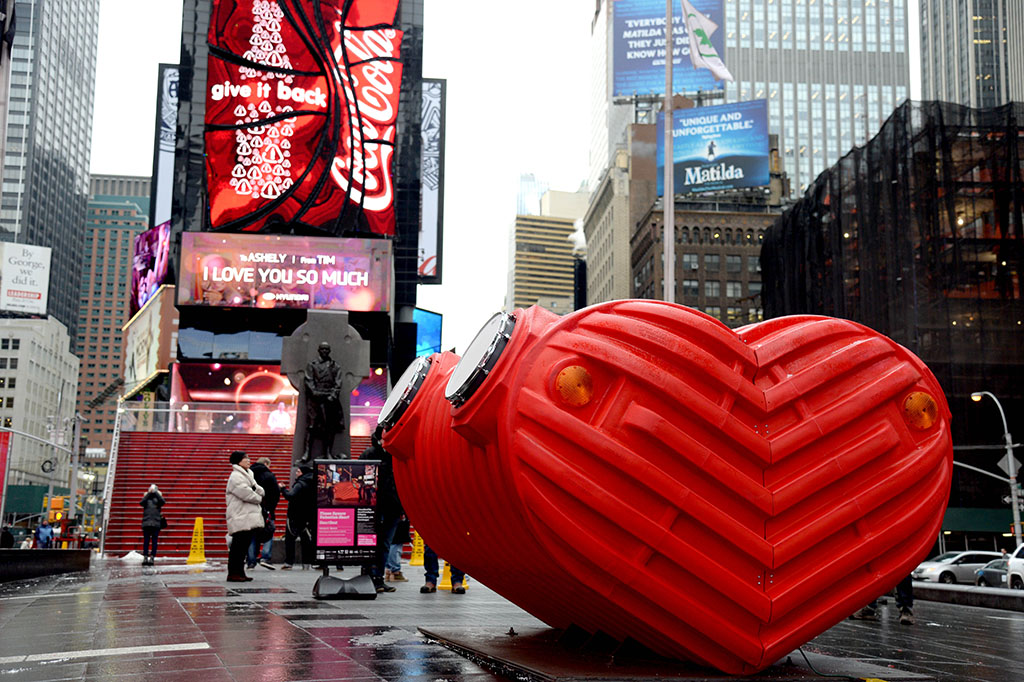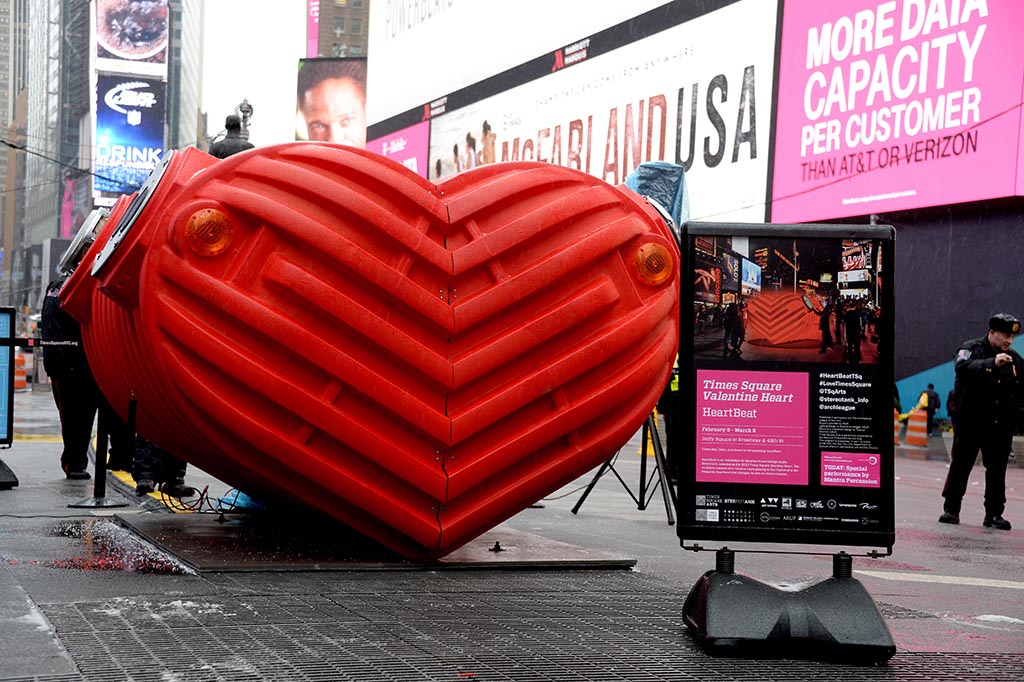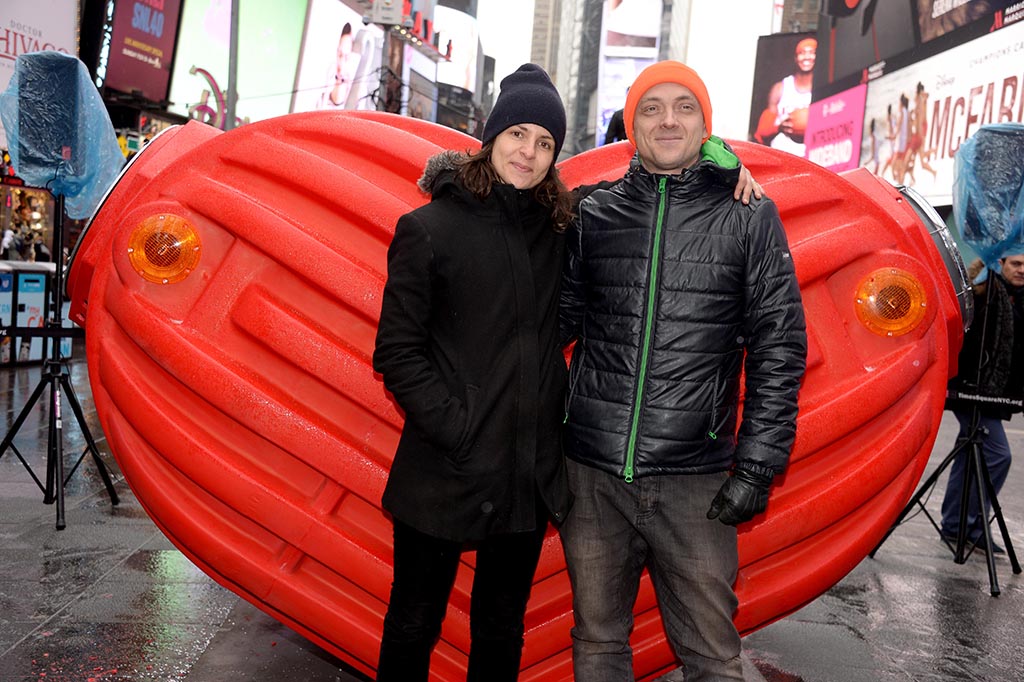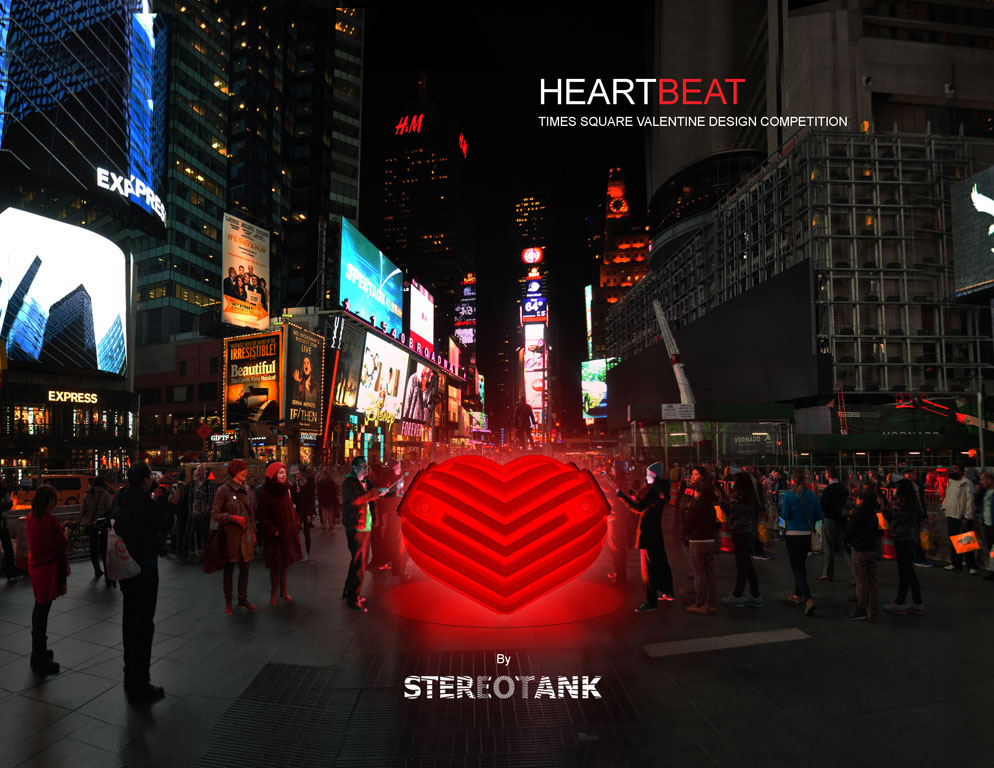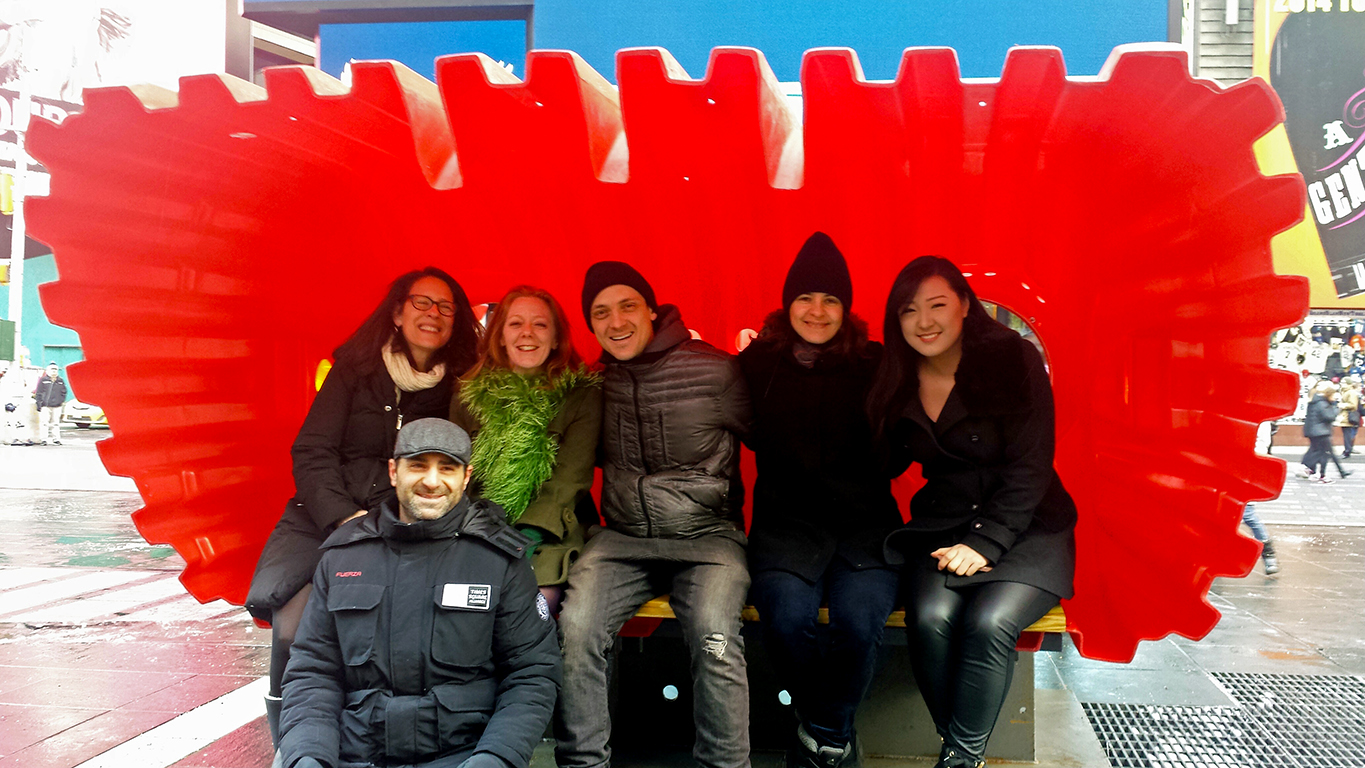Making HeartBeat
A look behind the scenes of the installation of the 2015 Times Square Valentine Heart.
December 12, 2017
For the past seven years, the Times Square Alliance’s public arts program Times Square Arts has held a limited design competition for architecture and design firms to create an installation celebrating Valentine’s Day in Times Square. This year, they asked The Architectural League to collaborate on the competition by curating the list of invited firms and overseeing the Request For Proposals, which was managed by the League’s Program Director, Anne Rieselbach.
Brooklyn-based studio Stereotank’s HeartBeat was chosen as the winner of the 2015 Times Square Valentine Heart. HeartBeat is a glowing, pulsing urban drum. This interactive sculpture consists of a massive heart with a pulsing light that is modulated to the rhythm of a deep heartbeat sound. Visitors are encouraged to engage with it by playing various percussion instruments to create rhythmic noises that replace the sound of the heartbeat. The audience is invited to come together and creatively play, listen, dance and feel the vibrations of the heart while enjoying the warm pulsating light. In the emblematic, active, flickering atmosphere of Times Square, HeartBeat orchestrates multiple rhythms into a unique urban concert.
HeartBeat is constructed from two modified, custom-colored plastic septic tanks and is equipped with various percussion instruments. Each drum has unique sounds and resonant characteristics. Membranes of different sizes and materials such as synthetic snare skin, synthetic snare skin with coil, animal hide, and hard plastic are used to create a variety of drum timbres. The sound hardware and illumination are contained inside the heart, combining to creating a massive, glowing heart with a strong, deep, and low-frequency heartbeat. We followed Stereotank as they fabricated the installation, chose the instruments, conducted sound and lighting tests, documented in the embedded video above and process photos below.
HeartBeat was chosen for its iconography and feasibility, compactly but effectively bringing vibrancy to Father Duffy Square. The installation creates an iconic setting for photos and events, engaging visitors through an accessible, multi-sensory machine with a bright presence. The aspirations of the design aligned with the budget, a critical factor in the selection process, to ultimately create a bright and distinctive presence through minimal means.
Marcelo Ertorteguy and Sara Valente, Venezuelan New York-based architects, founded Stereotank to experiment with the common grounds between architecture, art, and sound. Their focus lies on the research, design, and construction of immersive installations in urban settings for public engagement, often using found objects (or rather, sought objects) as raw materials with the intention of exploring their re-configuration and their sound properties in space as another dimension of the material.
HeartBeat was constructed in collaboration with sound and interaction designer Terence Caulkins and lighting designer Stephanie Hillegas, both of ARUP. Support was provided by Robert Silman Associates, Integrated, and Guitar Center.
The winning design was chosen by a jury of individuals with expertise in design and public art: Barry Bergdoll, Yolande Daniels, Wendy Evans Joseph, Wendy Feuer, Jennifer Lantzas, Granger Moorhead, Sara Reisman, and Bradley Samuels as well as additional jurors Sherry Dobbin, Rosalie Genevro, Ellen Goldstein, Anne Rieselbach, and Tim Tompkins. The other invited finalists were Alibi Studio, Bittertang, Chat Travieso, MODU, SLO Architecture, and Taylor and Miller. Learn more about the finalists through the links below.
View Stereotank’s winning competition proposal here.
View excerpts from the six finalist designs below:
Alibi Studio, Dark Heart
Bittertang, Heart Throb
Chat Travieso, Lovepost
MODU, Collective Heart
SLO Architecture, Love Is No Accident
Taylor and Miller, Love Letter
On March 2nd, HeartBeat transformed into HeartSeat, public seating that complements the iconic red steps in Duffy Square. The “opening” of the heart physically and conceptually embraces the public while providing shelter from the elements.



